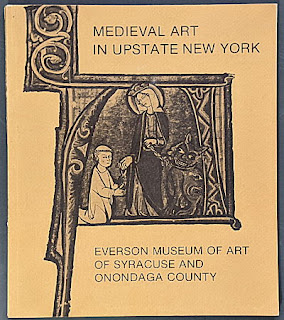It reminded me that, in addition to an Otto Ege portfolio of "Fifty Original Leaves" (digitized here), the Buffalo and Erie County Public Library has some other interesting leaves and codices. I emailed the Library, and Amy J. Pickard, the Rare Book Curator, kindly and very promptly sent me reference images of all the leaves I enquired about.
In addition to a leaf from Ege HL 18 [1] in the "Fifty Original Leaves" portfolio (here), the Library has another leaf from the same manuscript, which we will come to shortly. The 90-leaf carcass of the parent volume was offered (but was apparently unsold) as part of the Ege estate at Sotheby's, 26 November 1985, lot 59 [2], and from this large portion it was possible to attribute the manuscript to "Flanders, possibly Ghent", because the litany includes numerous other Flemish saints, including Livinus and Bavo (who were important in Ghent) highly-placed.






